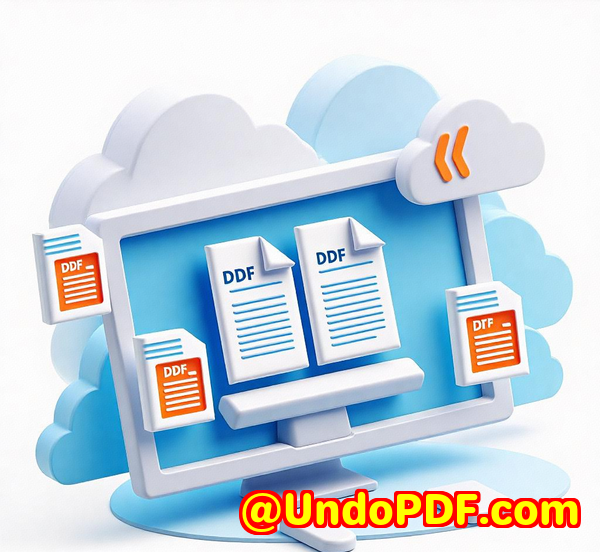How to overlay payment disclaimers on finance PDFs before email or download
How to Overlay Payment Disclaimers on Finance PDFs Before Email or Download
Every time I had to send out financial reports or invoices, I’d pause, thinking: “Did I remember to add the payment disclaimer? What if someone misses the fine print and causes a headache later?” If you work in finance, legal, or admin, you know exactly what I mean. Adding those important disclaimers or disclaimers to PDFs before sharing them by email or download is a must. But doing it manually? That’s a time sink and prone to mistakes.

Enter VeryPDF PDF Overlay Command Line and SDK. This tool became my go-to for stamping those essential payment disclaimers on PDFs, automatically and without fuss. Whether you’re handling a few documents or thousands, this software has the muscle and flexibility to nail it no manual editing, no guesswork, and no ugly “paste-and-save” mess-ups.
Why Overlay Payment Disclaimers on Finance PDFs?
Overlaying is not just slapping text or images on top of a PDF; it’s about precision and maintaining document integrity.
-
You want disclaimers to be crystal clear but not ruin the clean look of your reports.
-
The overlay needs to match the style fonts, size, placement and keep everything print-ready.
-
It has to be fast and reliable, especially if you’re automating invoice dispatch or financial disclosures.
I faced this exact challenge when working with monthly finance reports. Manually adding disclaimers on each PDF was painful and error-prone. VeryPDF’s solution automated the entire process, and the results blew me away.
What is VeryPDF PDF Overlay Command Line and SDK?
At its core, this software lets you layer one PDF onto another think of it as laying a watermark, letterhead, or disclaimer on top of your base document. But unlike simple merging tools, it preserves the quality and structure of both PDFs, making sure nothing looks pixelated or out of place.
It’s royalty-free and designed for Windows and Linux developers, so whether you’re integrating it into a backend system or running batch jobs on servers, it fits right in.
Who Should Use This Tool?
If you’re in finance, legal, publishing, or any organisation that sends out official PDF documents, this SDK is built for you.
-
Finance teams needing to add dynamic payment disclaimers or compliance statements to invoices and statements.
-
Legal departments stamping confidentiality notices or disclaimers.
-
Print centres applying branded overlays on client documents.
-
Educational bodies watermarking exam papers or eBooks.
Basically, anyone who needs to overlay content on PDFs dynamically and at scale will find this tool invaluable.
Key Features That Made My Life Easier
Standalone and Offline Operation
No need for cloud services or internet connections. It runs fully offline on Windows and Linux, so your documents stay secure and processing stays fast.
High-Quality Output
The overlays keep all vector elements crisp and fonts intact no blurry text or distorted images. That’s crucial when sending official finance documents that might be printed or archived.
Flexible and Powerful Integration
You can invoke the overlay via command-line or use APIs in languages like Python, C#, PHP, and more. I hooked it into our internal workflow scripts it was seamless.
Batch Processing
If you’re drowning in PDFs (like monthly invoicing cycles), this feature saves you hours. You just set it up once and run it against thousands of documents automatically.
Custom Positioning and Conditional Overlays
Need the disclaimer on page 1 only, or in a corner? Or different overlays for different departments? No problem. The SDK lets you specify exactly where and when overlays appear.
How I Used VeryPDF to Overlay Payment Disclaimers
When I started, I had a folder with hundreds of PDFs invoices, monthly statements, and financial reports all needing a payment disclaimer stamped on the bottom of the first page.
-
I created a simple PDF containing the payment disclaimer text with my company’s branding.
-
Using VeryPDF’s command line, I set up a batch process to overlay this disclaimer PDF onto every target PDF.
-
I configured the overlay position precisely, so it didn’t block any crucial invoice details but remained highly visible.
-
Ran the process overnight. By morning, every PDF was stamped and ready to email or archive.
The best part? The quality stayed flawless, and the whole operation was lightning fast. No crashes, no missed files, no headaches.
Why VeryPDF Beats Other Overlay Tools
I tried a few free or basic PDF merging tools, but none had the polish or flexibility of VeryPDF.
-
Other tools often rasterised PDFs, killing vector quality and making text fuzzy.
-
Most required internet connections or cloud uploads, raising security flags.
-
Few supported precise positioning or conditional overlays.
-
Batch processing was clunky or non-existent elsewhere.
VeryPDF’s SDK feels built for enterprise-grade use, even if you’re just a small team automating routine tasks.
Wrapping Up: Why I Recommend VeryPDF PDF Overlay SDK
If you deal with adding payment disclaimers or any overlays on finance PDFs, this tool is a game changer.
It cuts out manual labour, guarantees professional-quality results, and scales from single files to thousands.
I’d highly recommend this to anyone sending official PDF documents needing overlays be it disclaimers, headers, watermarks, or legal stamps.
Start your free trial now and see how it can streamline your PDF workflows: https://www.verypdf.com/
Custom Development Services by VeryPDF
VeryPDF doesn’t just stop at offering powerful PDF overlay tools. They also provide custom development services tailored to your specific needs.
Whether you’re working on Linux, macOS, Windows, or server environments, VeryPDF’s team can help create utilities and SDK integrations using Python, PHP, C/C++, Windows API, and more.
Some highlights include:
-
Developing Windows Virtual Printer Drivers to generate PDFs and other formats.
-
Monitoring and capturing printer jobs for automated document processing.
-
Implementing PDF security features like digital signatures and DRM protection.
-
Creating OCR and barcode recognition tools for scanned documents.
-
Designing report generators, image converters, and document management utilities.
If you have complex document processing workflows or unique overlay requirements, contacting VeryPDF through their support center at https://support.verypdf.com/ is the way to go. They work closely with you to deliver precise solutions that fit your business.
FAQs
Q: Can I use VeryPDF PDF Overlay SDK without internet?
A: Absolutely. The SDK is a standalone offline solution that runs on Windows and Linux without any internet dependency.
Q: Is it possible to overlay different disclaimers on different PDFs automatically?
A: Yes, the SDK supports conditional overlays based on your custom logic, so you can apply different overlays per document or page.
Q: Does the overlay affect the original PDF quality?
A: No, it preserves vector content, fonts, and image resolution, ensuring print-ready, professional results.
Q: Can I integrate this SDK into my existing application?
A: Yes, VeryPDF provides command-line interfaces and APIs compatible with many programming languages like Python, C#, PHP, and more.
Q: How does batch processing work?
A: You can run scripts to process thousands of PDFs at once, automatically overlaying your disclaimers without manual intervention.
Tags / Keywords
-
PDF overlay payment disclaimers
-
Finance PDF stamping software
-
Batch PDF overlay tool
-
PDF overlay SDK for developers
-
Automate PDF disclaimers
If you’re tired of manually editing PDFs to add payment disclaimers, this solution will save you time and headaches. VeryPDF’s PDF Overlay Command Line and SDK is built for professionals who want fast, flexible, high-quality PDF overlays no fluff, just results.



